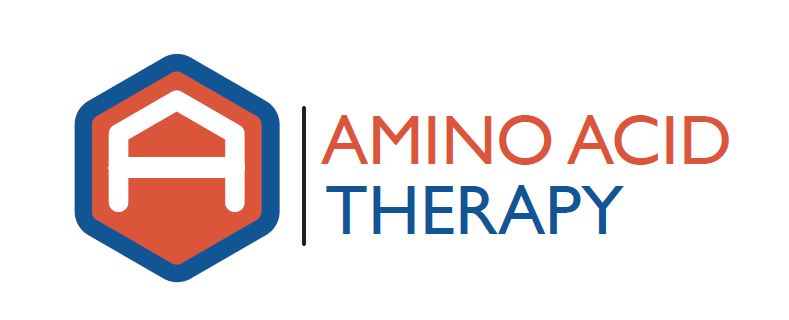One of the most frustrating experiences a person can have is to have symptoms return “out of the blue” after a long period of doing well (i.e., being without symptoms). Luckily, there are several probable reasons that we can identify and correct to get someone back on track and symptom-free ASAP.
The return of symptoms is always disconcerting. This is especially true if symptoms return after a long period of being symptom free. In this instance, the return of symptoms usually also entails a great deal of anxiety and worry that amino acid therapy “is no longer working”, and one can be tempted to immediately search for other solutions.
Professional Guidance and Testing
However, we’ve found that if a person (1) has been working with a provider skilled in the use of amino acid therapy, (2) has conducted periodic testing to help find the proper balance of amino acids needed and (3) has been keeping track of their daily dosing, determining and addressing the underling reason for the return of symptoms can be pretty straightforward. If a person hasn’t been doing the three things listed in the last sentence, that’s where they need to start, as we have found (through painful personal experience) that a shotgun approach to using amino acids rarely works over time. This is where consulting with a provider trained in the use of amino acids can save loads of time and frustration. These providers will help determine each person’s unique amino acid needs and can order testing if and as necessary to fine tune their recommendations.
Daily Journal
Outside of working with a provider to implement amino acid therapy, the next most important piece of this puzzle is to begin journaling exactly what and when you are taking your amino acids throughout the day. Yes, I know it’s time consuming and that most people are “absolutely sure” that they’ve been taking their amino acids exactly as recommended, but I can tell you from personal experience that the vast majority of people that see an abrupt return of symptoms have either (a) missed one or more doses of amino acids, (b) have recently modified their amino acid dosing and/or (c) have recently switched to a different amino acid product, usually as a way to try and save money. There is no substitute for writing this information down – on a piece of paper or in your phone – every day for every dose; do this for at least 7 days. If your symptoms resolve, continue journaling until you reestablish a daily routine where you don’t miss or change your dosing/products. If your symptoms persist, read on.
Causes of Neurotransmitter Imbalances
If you’ve been taking your amino acids exactly as recommended by your provider and symptoms have returned after doing well for a period of time, we know there is a reason, we just have to find it. There are many things that can throw off your neurotransmitter levels – including stress, digestive disturbances, head or neck trauma, sleep disturbances, pain, alcohol and/or illicit drug use as well as various medications. Therefore, the next step entails looking at the known causes of neurotransmitter imbalance and determining which may be affecting you at this time.
Have you been under a great deal (or great deal more) stress as of late? Has your sleep been less than optimal? Did you hit your head and/or might you have a subluxation in your spine that needs correction? Have you been imbibing in more alcohol and/or illicit drug use lately or have you changed any medications (or medication dosages)? Any one of these things can cause a change in your neurotransmitter levels and/or alter your amino acid needs. Once you know this, the easy part is identifying the likely underlying cause(s) of neurotransmitter imbalance – the real work is correcting them.
Addressing Underlying Imbalances
Sometimes this can be relatively straightforward. You realize you’ve been drinking a lot more alcohol lately and you make a point to cut back. After a week or two, your neurotransmitter stores replenish and your symptoms resolve. But sometimes, these imbalances are not so easy to quickly address.
Stress is the number one reason that is identified by most people that is likely causing them issues. This problem is that resolving those stressors in our lives – or at the very least improving our stress resilience – usually takes a concerted effort over a prolonged period of time. Don’t misunderstand me, this accomplishment – reducing the impact of stress in one’s life – is absolutely necessary in order to resolve any symptoms of neurotransmitter imbalance. It’s also necessary to achieve any sort of balance in one’s life. The real issue is what to do while you are implementing stress management strategies – like breathing exercises – into our daily routine.
In these cases – where the likely culprit is either (a) going to take time to address or (b) is creating additional amino acid need (as in the case of sleep or digestive disturbances), modifying your amino acid dosing while you address the underlying reason(s) for imbalance will often be required. Very often, this entails increasing one or more amino acids and/or cofactors, often only slightly, to bump up neurotransmitter production in times of need. Your health history is critical to determining how this correction should occur; therefore you should consult your health care professional to determine how to properly modify your amino acid dosing while you work to correct whatever underlying imbalances may have altered your amino acid needs in the first place.
Once those underlying imbalances have been corrected, it is very likely that your need for additional amino acids will be eliminated and you’ll be able to reduce your amino acid dosing. Very often, addressing the known underlying causes of neurotransmitter imbalance will allow a person to slowly taper – and possibly eliminate – the amino acids needed to keep symptoms of imbalance under control.

